On August 12th, 2019
the movie that never seems to grow old celebrated its 80th
anniversary. For 80 years, Oz has entranced audiences with its
optimistic promise: you may live on a dusty Kansas farm, but with
just a dash of magic and a cooperative tornado, you, too, might make
it "over the rainbow."

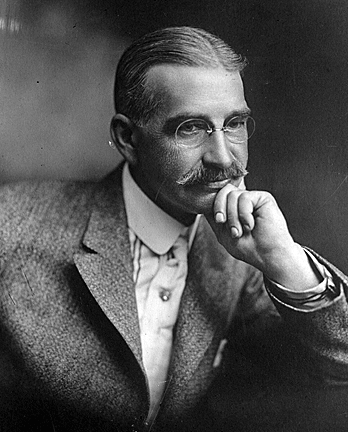 The
Wizard of Oz is a 1939 American musical fantasy film produced by
Metro-Goldwyn-Mayer, currently distributed by Warner Bros. Pictures.
Widely considered to be one of the greatest films in cinema history,
it is the best-known and most commercially successful adaptation of
L. Frank Baum's 1900 children's book The Wonderful Wizard of Oz.
Directed primarily by Victor Fleming, the film stars Judy Garland as
Dorothy Gale alongside Ray Bolger, Jack Haley and Bert Lahr.
The
Wizard of Oz is a 1939 American musical fantasy film produced by
Metro-Goldwyn-Mayer, currently distributed by Warner Bros. Pictures.
Widely considered to be one of the greatest films in cinema history,
it is the best-known and most commercially successful adaptation of
L. Frank Baum's 1900 children's book The Wonderful Wizard of Oz.
Directed primarily by Victor Fleming, the film stars Judy Garland as
Dorothy Gale alongside Ray Bolger, Jack Haley and Bert Lahr.
Characterized by its legendary use of Technicolor, fantasy
storytelling, musical score, and memorable characters, the film has
become an icon of American popular culture. It was nominated for six
Academy Awards, including Best Picture, but lost to Gone with the
Wind, also directed by Fleming. It did win in two other categories:
Best Original Song for "Over the Rainbow" and Best Original Score by
Herbert Stothart. Though the producers considered it a critical
success upon its release in August 1939, it failed to make a profit
for MGM until the 1949 re-release, earning only $3,017,000 on a
$2,777,000 budget, not including promotional costs. This made it
MGM's most expensive production at that time.
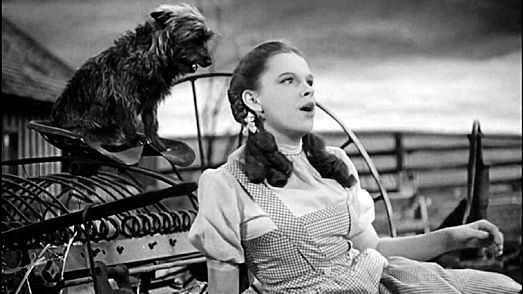
The Story
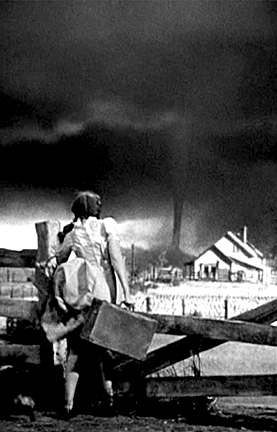 Dorothy
Gale lives with her dog Toto on the Kansas farm of her Aunt Em and
Uncle Henry. Toto bites their neighbor Almira Gulch on the leg, and
she obtains an order from the sheriff for Toto to be euthanized. She
takes Toto away on her bicycle, but he escapes and returns to
Dorothy, and she decides to run away. She meets Professor Marvel,
fortune teller and owner of a traveling medicine show, who uses his
crystal ball to make Dorothy believe that Aunt Em may be dying of a
broken heart. Dorothy races home, arriving just as a tornado
strikes. Locked out of the farm's storm cellar, she seeks shelter in
her bedroom. Wind-blown debris knocks her unconscious and the house
is sent spinning in the air. She awakens to see various figures fly
by, including Miss Gulch on her bicycle, who transforms into a witch
on a broomstick.
Dorothy
Gale lives with her dog Toto on the Kansas farm of her Aunt Em and
Uncle Henry. Toto bites their neighbor Almira Gulch on the leg, and
she obtains an order from the sheriff for Toto to be euthanized. She
takes Toto away on her bicycle, but he escapes and returns to
Dorothy, and she decides to run away. She meets Professor Marvel,
fortune teller and owner of a traveling medicine show, who uses his
crystal ball to make Dorothy believe that Aunt Em may be dying of a
broken heart. Dorothy races home, arriving just as a tornado
strikes. Locked out of the farm's storm cellar, she seeks shelter in
her bedroom. Wind-blown debris knocks her unconscious and the house
is sent spinning in the air. She awakens to see various figures fly
by, including Miss Gulch on her bicycle, who transforms into a witch
on a broomstick.
The house lands in Munchkinland in the Land of Oz. Glinda the Good
Witch of the North and the Munchkins welcome her as a heroine, as
the falling house has killed the Wicked Witch of the East. Her
sister, the Wicked Witch of the West, arrives to claim the slippers,
but Glinda transports them onto Dorothy's feet first. The Wicked
Witch of the West swears revenge on Dorothy, then vanishes. Glinda
tells Dorothy to keep the slippers on and follow the yellow brick
road to the Emerald City, where she can ask the Wizard of Oz to help
her get back home.
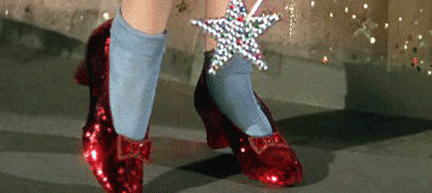
On her journey, Dorothy meets the Scarecrow, who wants a brain, the
Tin Woodman, who desires a heart, and the Cowardly Lion, who needs
courage. Dorothy invites them to accompany her to Emerald City,
where they can ask the Wizard to help them too. Despite the Witch's
attempts to stop them, they reach the Emerald City and are
eventually permitted to see the Wizard, who appears as a large
ghostly head surrounded by fire and smoke. He agrees to grant their
wishes if they prove their worth by bringing him the Witch's
broomstick.
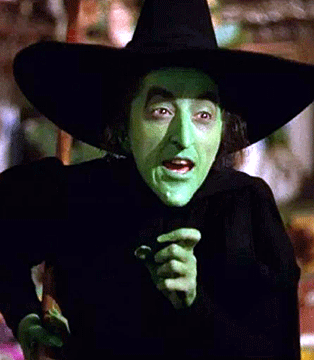 As
the foursome and Toto make their way to the Witch's castle, the
Witch captures Dorothy and plots her death in order to remove her
slippers. Toto escapes and leads her three friends to the castle.
They ambush three guards, don the guards' uniforms, march inside and
free Dorothy. The Witch and her guards chase and surround them. The
Witch sets fire to the Scarecrow, causing Dorothy to toss a bucket
of water, inadvertently splashing the Witch, who melts away. The
guards rejoice and give Dorothy her broomstick.
As
the foursome and Toto make their way to the Witch's castle, the
Witch captures Dorothy and plots her death in order to remove her
slippers. Toto escapes and leads her three friends to the castle.
They ambush three guards, don the guards' uniforms, march inside and
free Dorothy. The Witch and her guards chase and surround them. The
Witch sets fire to the Scarecrow, causing Dorothy to toss a bucket
of water, inadvertently splashing the Witch, who melts away. The
guards rejoice and give Dorothy her broomstick.
The Wizard stalls in fulfilling his promises, until Toto pulls back
a curtain and exposes the "Wizard" as a middle-aged man operating
machinery and speaking into a microphone. Admitting to being a
humbug, he insists that he is a good man but a bad wizard. He then
gives the Scarecrow a diploma, the Lion a medal and the Tin Man a
ticking heart-shaped watch, helping them see that the attributes
they sought were already within them. He then offers to take Dorothy
and Toto home in his hot air balloon. He reveals that he, too, is
from Kansas, and worked at a carnival when a tornado brought him to
the Emerald City. He was offered and accepted the job as Wizard due
to hard times.
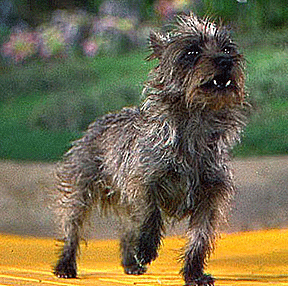 As
Dorothy and the Wizard prepare to depart, Toto, distracted by a cat,
leaps from Dorothy's arms. As she pursues Toto, the balloon
disembarks with the Wizard, leaving Dorothy. Glinda appears and
tells Dorothy the ruby slippers have the power to return her to
Kansas if she taps her heels together three times repeating "There's
no place like home." Dorothy complies and wakes up in her bedroom
surrounded by her family and friends, including Toto. Everyone
dismisses her adventure as a dream, but Dorothy insists it was real
and says she will never run away from home again. She then declares:
"There's no place like home!"
As
Dorothy and the Wizard prepare to depart, Toto, distracted by a cat,
leaps from Dorothy's arms. As she pursues Toto, the balloon
disembarks with the Wizard, leaving Dorothy. Glinda appears and
tells Dorothy the ruby slippers have the power to return her to
Kansas if she taps her heels together three times repeating "There's
no place like home." Dorothy complies and wakes up in her bedroom
surrounded by her family and friends, including Toto. Everyone
dismisses her adventure as a dream, but Dorothy insists it was real
and says she will never run away from home again. She then declares:
"There's no place like home!"
The original producers thought that a 1939 audience was too
sophisticated to accept Oz as a straight-ahead fantasy; therefore,
it was re-conceived as a lengthy, elaborate dream sequence. The
original script was so bad, it had to go through extensive
re-writes.
Special Effects
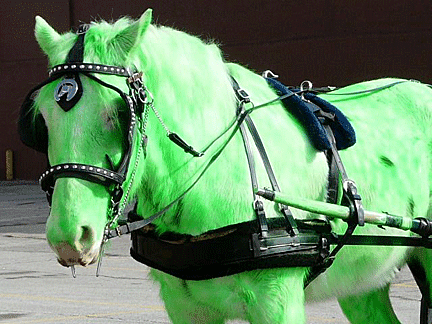 Today’s
movie audience expects high-tech special effects. But those created
for the Wizard of Oz were strictly old school. The creation of the
tornado was a good example. Gillespie used muslin cloth to make the
tornado flexible after a previous attempt with rubber failed. He
hung the 35 feet of muslin to a steel gantry and connected the
bottom to a rod. By moving the gantry and rod, he was able to create
the illusion of a tornado moving across the stage. He then sprayed
Fuller's earth from both the top and bottom using compressed air
hoses to complete the effect.
Today’s
movie audience expects high-tech special effects. But those created
for the Wizard of Oz were strictly old school. The creation of the
tornado was a good example. Gillespie used muslin cloth to make the
tornado flexible after a previous attempt with rubber failed. He
hung the 35 feet of muslin to a steel gantry and connected the
bottom to a rod. By moving the gantry and rod, he was able to create
the illusion of a tornado moving across the stage. He then sprayed
Fuller's earth from both the top and bottom using compressed air
hoses to complete the effect.
For the "horse of a different color" scene, Gillespie used Jell-O
powder to color the white horses. He also used asbestos to achieve
some of the special effects like the witch's burning broomstick and
the fake snow that covers Dorothy as she sleeps in the field of
poppies.
Why Was the Wizard of Oz Such a Hit
After the years of the Great Depression and the confusing reports
coming from Europe as World War II ramped up, people were looking
for an escape, and the Wizard of Oz filled the bill. But even with
that sort of impetus, the movie wasn’t a huge success—at least not
at first.
But the film did have everything going for it. It had spot-on
casting, with Judy Garland as the wide-eyed Dorothy, Margaret
Hamilton as the Wicked Witch, and an Arlen & Harburg score that
included the instant smash ballad "Over the Rainbow."
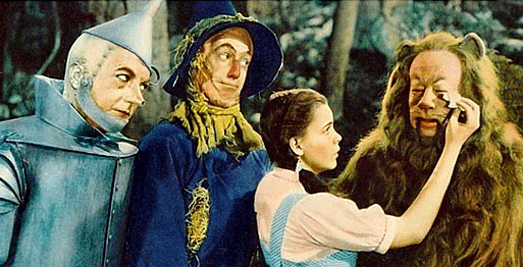
And when it came to spectacle, there were lavish costumes,
colorfully detailed sets, and eye-popping special effects to create
the Kansas Tornado, the Flying Monkeys, and the Melting Witch.
Then there was that underlying tug-at-your-heartstrings
message—people don't really know what they've got, until suddenly
they don't have it anymore. In other words, "There's no place like
home."
But what was so special about the premiere of this beloved classic?
It was shot in Technicolor, a four-color process that produced
extremely vibrant colors. The film’s producers used it to emphasize
the fantasy.
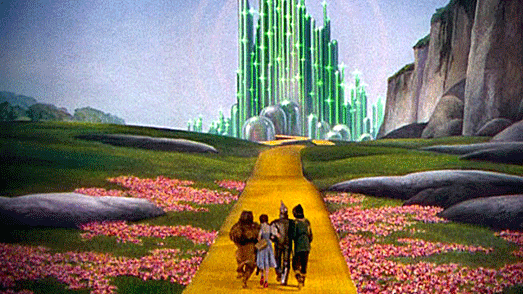
In any other year, the Wizard of Oz would have zoomed to the top of
the box office charts, but this was 1939 and strong competition
included the year's powerhouse, "Gone With The Wind." Even a huge
box office take couldn't cover the production's expense. Only with
re-releases did "The Wizard of Oz" turn a profit, and only with a
move from the big screen to the little one of the TV did it achieve
iconic status.
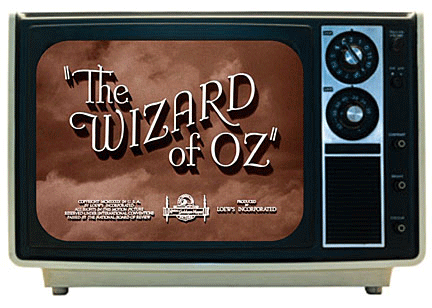 And
that occurred on November 3, 1956. At 9 p.m. across America, plenty
of pajama-clad baby-boomers were curled up in front of their TVs.
breathlessly awaiting the first-ever TV broadcast of "The Wizard of
Oz." Ordinarily, they'd be in bed by then, but their folks had given
in to CBS publicity, which implored, "Let the kids stay up to watch
this brilliant musical fairy tale."
And
that occurred on November 3, 1956. At 9 p.m. across America, plenty
of pajama-clad baby-boomers were curled up in front of their TVs.
breathlessly awaiting the first-ever TV broadcast of "The Wizard of
Oz." Ordinarily, they'd be in bed by then, but their folks had given
in to CBS publicity, which implored, "Let the kids stay up to watch
this brilliant musical fairy tale."
Eyes opened wide at the terrors of the of the tornado. Giggles
ensued when the Cowardly Lion growled "Put `em up -put `em
up!"...and faces were hidden in pillows. when the Wicked Witch let
loose with her dastardly cackle. In the days of just three major
networks, most people believed watching "The Wizard of Oz" in the
comfort of their own living rooms was over the top.
From then on until recently, the airing of the Wizard of Oz quickly
became an annual TV staple. For the generations whose first exposure
to the movie was on TV. "The Wizard of Oz" was just as
exciting...just as unforgettable... as it must have been at its 1939
premiere.
